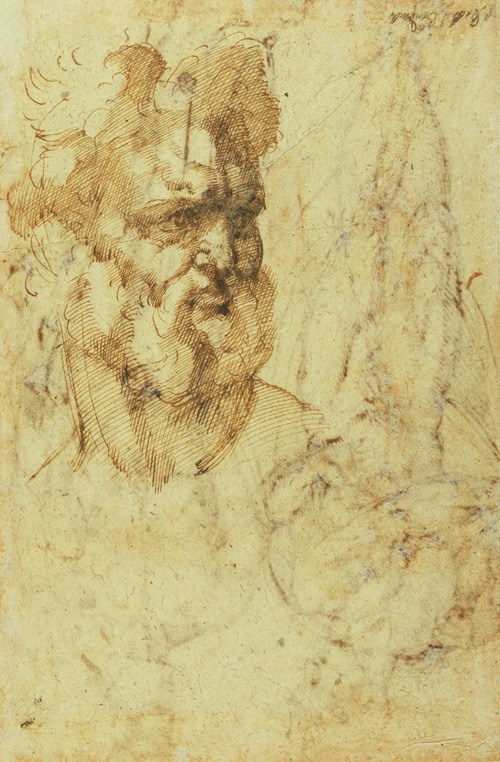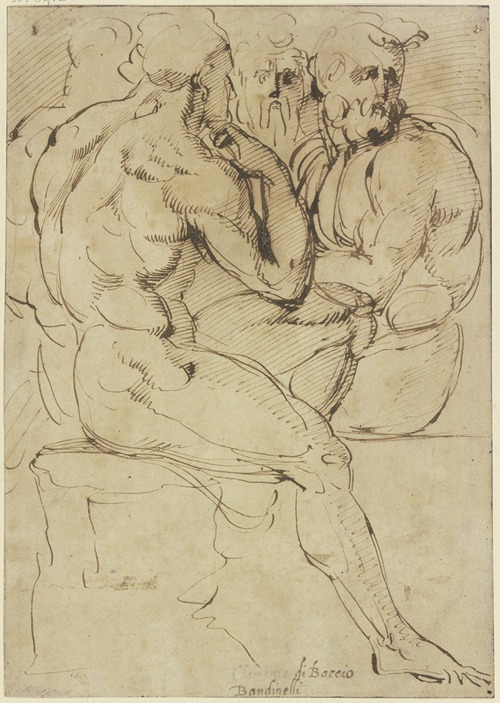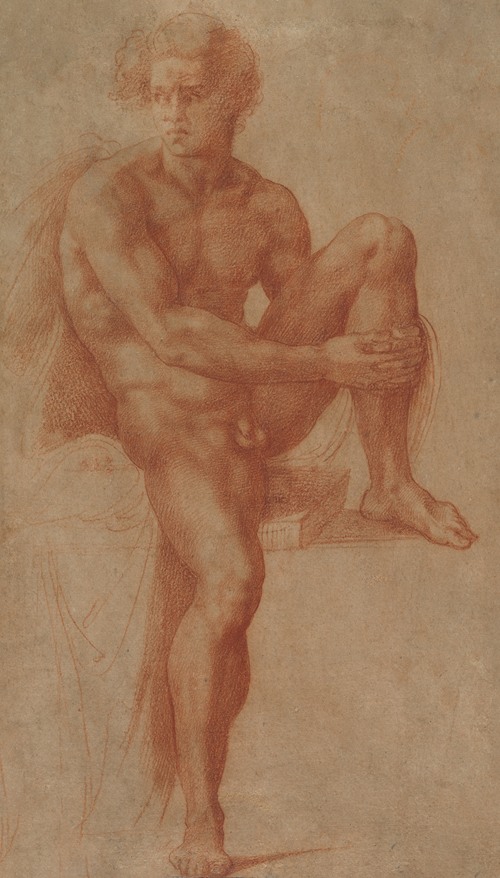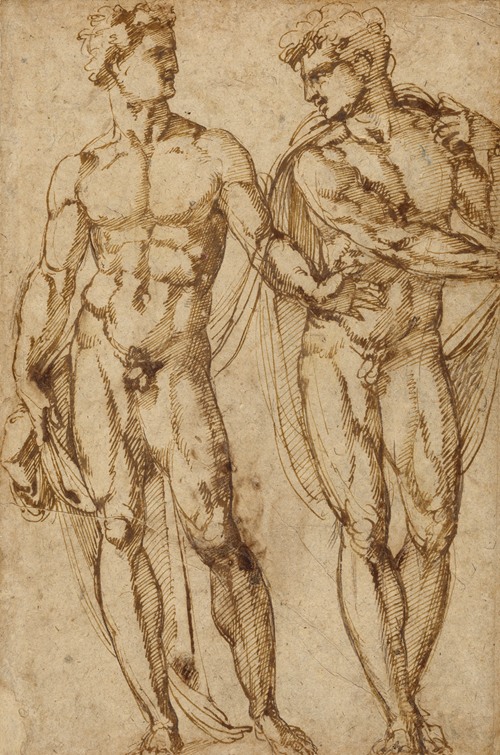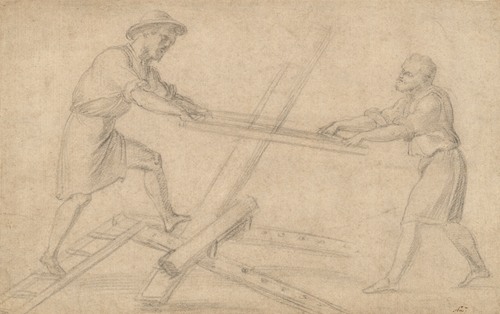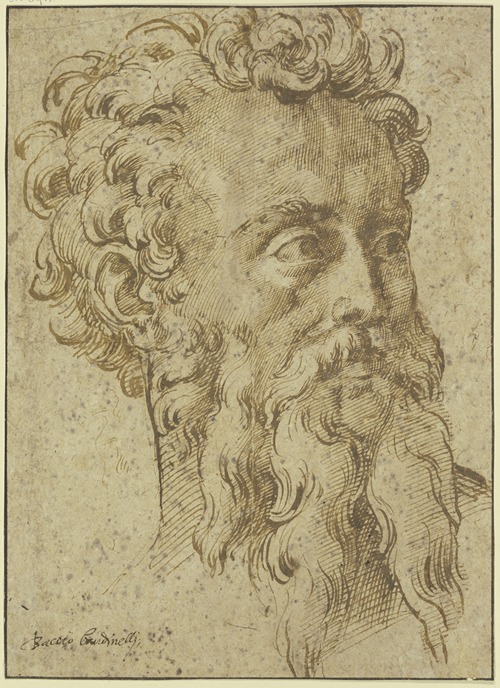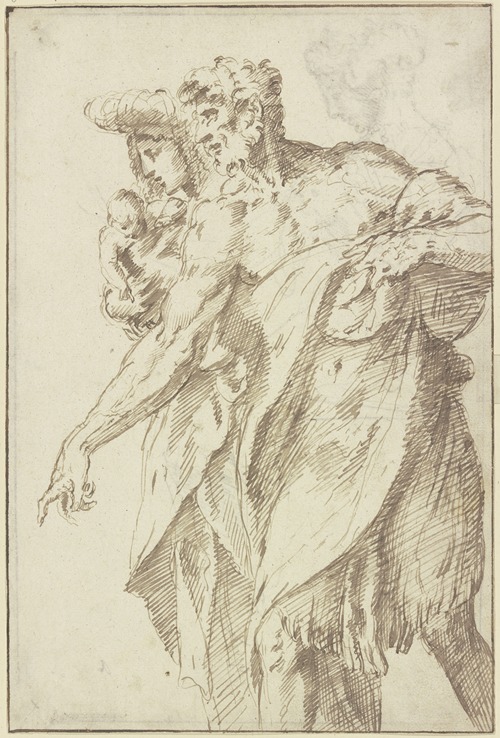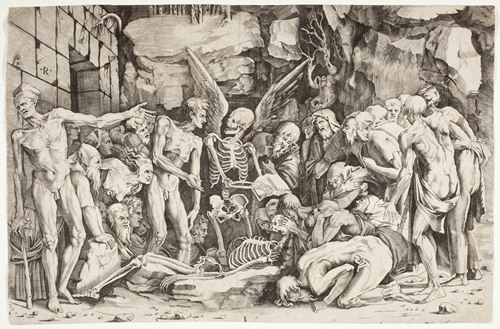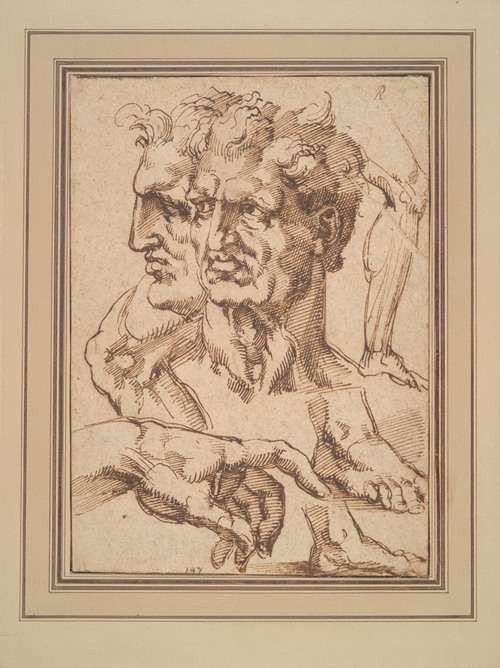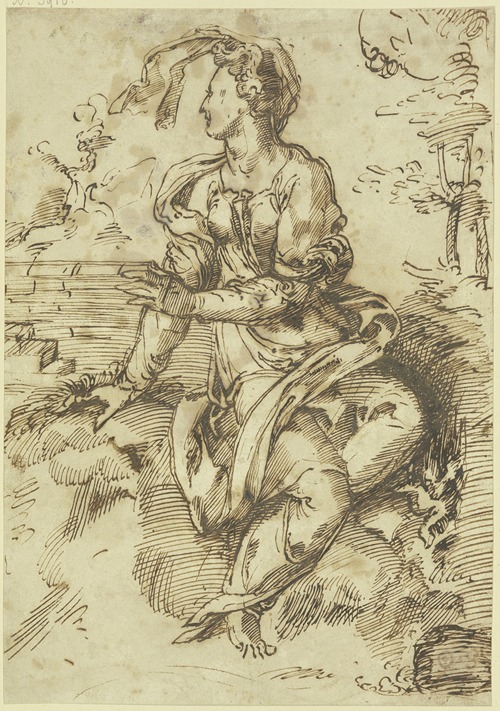

Bartolommeo (or Baccio) Bandinelli, actually Bartolommeo Brandini, was a Renaissance Italian sculptor, draughtsman and painter.
Bandinelli was the son of a prominent Florentine goldsmith, and first apprenticed in his shop. As a boy, he was apprenticed under Giovanni Francesco Rustici, a sculptor friend of Leonardo da Vinci. Among his earliest works was a Saint Jerome in wax, made for Giuliano de' Medici, identified as Bandinelli's by John Pope-Hennessy.
Giorgio Vasari, a former pupil in Bandinelli's workshop, claimed Bandinelli was driven by jealousy of Benvenuto Cellini and Michelangelo.
Bandinelli's lifelong obsession with Michelangelo is a recurring theme in assessments of his career.
Bandinelli was a leader in the group of Florentine Mannerists who were inspired by the revived interest in Donatello attendant on the installation of Donatello's bas-relief panels for the pulpit in San Lorenzo, 1515. The artist presented his relief of the Deposition to Charles V at Genoa in 1529; though the relief has been lost, a bronze from it by Antonio Susini in 1600 (Musée du Louvre) shows the decisive inspiration of Donatello's emotional pitch and intensity; Bandinelli made several drawings of the Donatello reliefs, though later in life he disparaged them in a letter to Cosimo I de' Medici.
His sculptures have never inspired the admiration given those of Michelangelo, especially the colossal (5.05 m) marble group of Hercules and Cacus (completed in 1534) in the Piazza della Signoria, Florence, and Adam and Eve in the Museo Nazionale del Bargello, which both stand within sight of some of Michelangelo's masterworks. Vasari said of him "He did nothing but make bozzetti and finished little", and modern commentators have remarked on the vitality of Bandinelli's terracotta models contrasted with the finished marbles: "all the freshness of his first approach to a subject was lost in the laborious execution in marble... A brilliant draughtsman and excellent small-scale sculptor, he had a morbid fascination for colossi which he was ill-equipped to execute. His failure as a sculptor on a grand scale was accentuated by his desire to imitate Michelangelo."
Hercules and Cacus was commissioned by the Medici pope Clement VII, who had been shown a wax model. The supplied block of Carrara marble was not big enough to execute Bandinelli's wax model. He had to make new wax models, one of which was chosen by the pope as the final draft. Bandinelli had already carved the sculpture as far as the abdomen of Hercules, when during the 1527 Sack of Rome, the pope was taken prisoner. Meanwhile, in Florence, republican enemies of the Medici took advantage of the chaos to exile Ippolito de' Medici. Bandinelli, a supporter of the Medici, was also exiled. In 1530 Emperor Charles V retook Florence after a long siege. Pope Clement VII subsequently installed his illegitimate son Alessandro de' Medici as duke of Tuscany. Bandinelli then returned to Florence and continue work on the statue till completed in 1534, and transported from the Opera del Duomo to its present marble pedestal. But from the moment it was unveiled, it faced ridicule; Cellini compared the ponderous group to 'a sack full of melons'. Afterwards, the Bandinelli tried to sabotage Cellini's career. The statue was restored between February and April 1994.
Bandinelli's drawings, which have in the past masqueraded as Michelangelos in connoisseurs' collections, have come into their own in the later twentieth century.
Among Bandinelli's pupils were Vasari and Francesco de' Rossi (Il Salviati). His sons Clemente, a collaborator in his studio, and Michelangelo Bandinelli were also sculptors.

